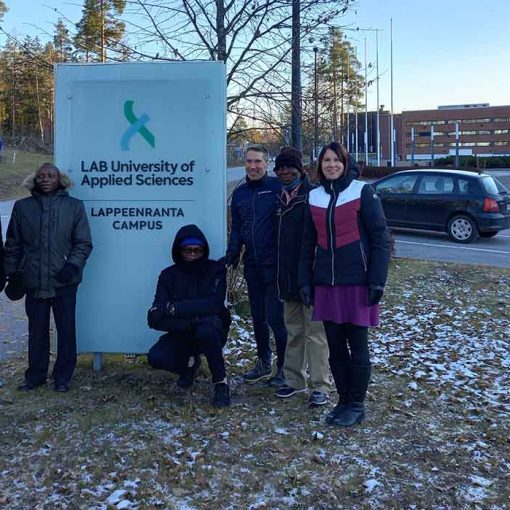The hackathon concept is one LABeko2 ‒ network, develop, internationalise, succeed project (LAB 2024) believe can be utilised at LAB University of Applied Sciences, to drive practical networking between students and business. The concept however may not be clear to some and so we shall explore the concept and highlight its uses.
The term hackathon comes from the words hacker and marathon, the concept may also be called a hack day. The first known event is believed to have taken place in Calgary, Canada at the Open BSD Hackathon event June 4, 1999 (Yasar et al 2023).
The concept is used commonly in the tech industry, where events are normally organised by companies, attracting programmers to come together and collaborate on a new software idea. Hackathons normally take form, in a collaborative yet competitive format, in which participants code and prototype software in a set time for a prize (Lawrence 2016).
Is the hackathon concept exclusively about software programming?
According to project LABeko2 ‒ network, develop, internationalise, succeed (LAB 2024), in this instance, no, the concept is just that, a concept that can be re-tooled to fit the needs and purposes of any organisation.
The idea is that any company can utilise this workshop style event, to attract interested students, to problem solve, innovate, and develop an idea based on the company’s needs. Allowing the company to test and observe the talent pool at LAB University of Applied Sciences. The problem doesn’t have to be software or programming related, it can be a product, service, business concept etc. that can be presented.
![[Alt text: dozens of people working with their laptops in a big hall.]](https://blogit.lab.fi/labfocus/wp-content/uploads/sites/8/2024/06/504_2024_The-hackathon-concept-and-its-use-to-all-fields-1024x559.jpg)
The general structure of a Hackathon according to Yasar et al (2023) is as follows:
- Introduce the company, theme, and problem to be solved.
- Rules, should be outlined and participants should be made aware under what conduct they must carry out the work in.
- Pitch the product, participants pitch their concept of the product, core ideas and form teams based on their interests.
- Collaborate on the project, once teams are formed from pitches, they work together on established ideas.
- Present a complete or incomplete project or prototype, that the team have worked on to the rest of the attendees at the event.
- Judges or organisers, judge and distribute prizes to winning teams or projects.
- Networking opportunities, the event allow for plenty of networking opportunities between participants and organisers.
With these steps in mind, one can determine the theme and use these steps to implement their own workshop event, or hackathon. As mentioned previously, this style of event does not necessarily have to cater to, software design, programming or anything related to tech companies, rather could be re-tooled for any field.
Author
Karl Osborne is a part-time project worker in the LABeko2 project (LAB 2024) at LAB University of Applied Sciences.

References
Dawson, A. 2014. Wikimedia commons. Cited 26 May 2024. Available at https://commons.wikimedia.org/wiki/File:Wikimania_hackathon_2.JPG
LAB. 2024. LABeko2 ‒ network, develop, internationalise, succeed. Project. LAB University of Applied Sciences. Cited 9 Apr 2024. Available at https://lab.fi/fi/projekti/labeko2-verkostoidu-kehita-kansainvalisty-menesty
Lawrence, A. 2016. What is a Hackathon? A Newbie’s Guide to Collaborative Coding. Rasmussen College. Cited 9 Apr 2024. Available at https://www.rasmussen.edu/degrees/technology/blog/what-is-a-hackathon/
Yasar, K. 2023. What is a hackathon?. TechTarget. Cited 9 Apr 2024. Available at https://www.techtarget.com/searchcio/definition/hackathon#:~:text=Hackathons%20bring%20people%20with%20technical,with%20others%20in%20their%20field.




